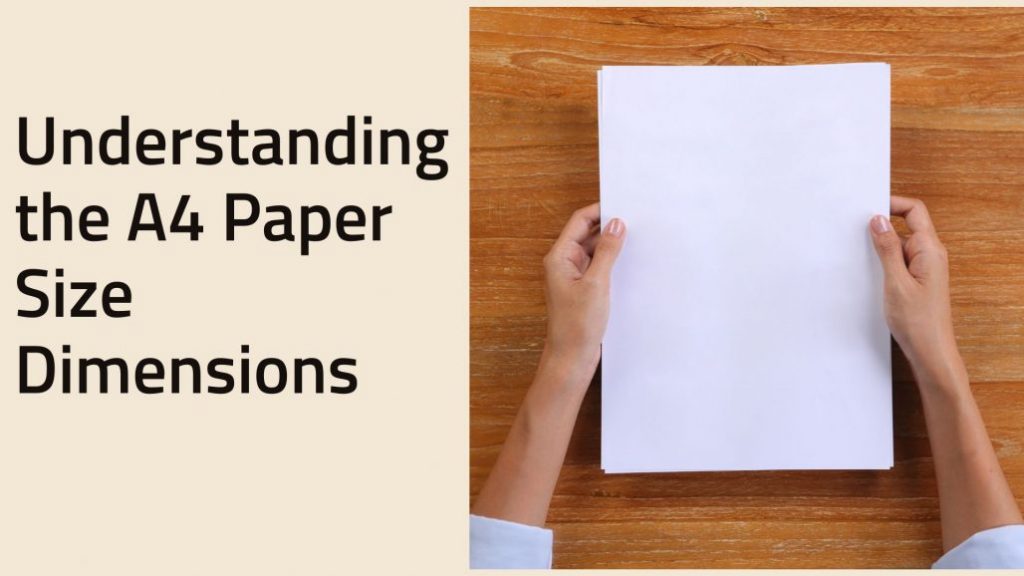The A4 format is the most well-known of all: we’re talking about the classic white sheet used in home printers and offices. Its applications are as common as they are varied, and shortly, we’ll discover how it continues to be used successfully.
But enough introductions, let’s uncover all the characteristics of the A4 format: its actual dimensions, origin, and classic tips for using it as effectively as possible in your printing tasks.
Enjoy your reading!
A4 Format and ISO 216 Standard
The dimensions of the A4 format are regulated by the ISO 216 standard. ISO 216 is simply the standard that governs paper formats used in many countries worldwide, except for Canada and the USA, which have adopted the Letter format. An interesting fact: the ISO 216 system was first adopted in Germany in the 1920s and gradually spread from there.
The origin of the A4 format is quite intriguing and dates back to an earlier period: it is said to have been used during the French Revolution, later falling out of use before reappearing in Germany in the 1920s. As mentioned in previous articles about different paper formats, ISO 216 bases all other formats on the A0 format.
The A4 format corresponds to one-sixteenth of the A0 format.
In terms of measurements, the A4 format is 21.0 x 29.7 cm, or 8.3 x 11.7 inches.
If, on the other hand, we want to know the dimensions in pixels for printing at 300 DPI, an A4 sheet should have a minimum of 2,480 x 3,508 pixels.
| Format | Millimetres | Inches | Pixels (for 300 DPI printing) |
|---|---|---|---|
| A0 | 841 x 1,189 | 33 x 47 | 9,933 x 14,043 |
| A1 | 594 x 841 | 23 x 33 | 7,016 x 9,933 |
| A2 | 420 x 594 | 16.5 x 23 | 4,961 x 7,016 |
| A3 | 297 x 420 | 11.5 x 16.5 | 3,508 x 4,961 |
| A4 | 210 x 297 | 8.3 x 11.7 | 2,480 x 3,508 |
| A5 | 148 x 210 | 5.8 x 8.3 | 1,748 x 2,480 |
| A6 | 148 x 105 | 5.8 x 4.1 | 1,240 x 1,748 |
| A7 | 105 x 74 | 4.1 x 2.9 | 874 x 1,240 |
| A8 | 74 x 52 | 2.9 x 2.0 | 614 x 874 |
| A9 | 52 x 37 | 2.0 x 1.5 | 437 x 614 |
| A10 | 37 x 26 | 1.5 x 1.0 | 307 x 437 |
A4 Format: What Is It Used For?
The A4 format is widely used due to its dimensions, making it particularly suitable for various contexts. It is believed to have been conceived and used for the first time in 1798 during the French Revolution as a paper medium for publishing judicial documents during that turbulent historical period.
Thanks to its dimensions, which are particularly suitable for clearly and orderly containing textual information, the A4 format has also been adopted as the official standard for documents drafted by the UN. With the progressive domestic adoption of inkjet printers first and later laser printers, it became an essential item in homes and offices.
Heavily used for printing documents, forms, and letters, the A4 format is also the standard size for school notebooks and is frequently adopted by magazines and textbooks. Additionally, company brochures are often nothing more than an A4 sheet folded in two or three parts.
A4 Format: Resolution and Printing Tips
We have summarised the measurements of the A4 format a few paragraphs above.
Creating projects in this format is relatively straightforward. You can create catalogues, books, magazines, or brochures. There are no special details to consider regarding the A4 format since all software programs in circulation use it as the standard format for creating documents and projects. After this summary, you are now ready to get to work on creating your A4 format documents.
Looking for a reliable printing company?
Get an instant quote